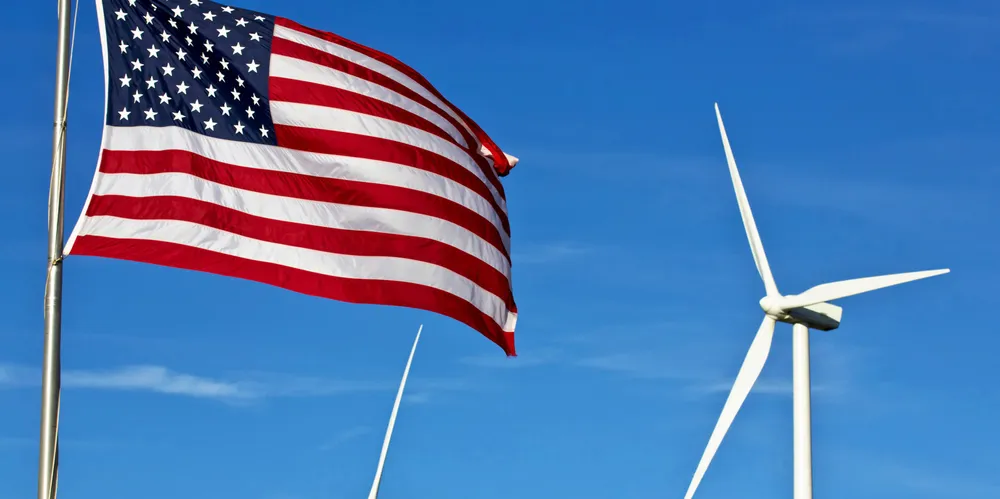US wind power faces three-year growth slump – even with offshore: Hitachi Energy
Firm's analytics arm Velocity Suite sees high probability America will add 5.8GW of annual capacity versus 13GW/yr between 2019-21

Annual “high probability” additions of US wind capacity will average 5.8GW over the next three years, which would be the worst 36-month performance in the last decade even with the emergence of a fast-growing offshore sector, according to latest data from Hitachi Energy’s Velocity Suite.
By comparison, three-year wind capacity installations totaled 38.6GW between 2019-21, or almost 13GW per year, and 22GW between 2017-2019, a 7.3GW annual rate, according to American Clean Power Association (ACP), a national trade group based in Washington, DC. Data for 2022 is not yet available.
The data shows a high probability that developers will install 98 wind farms through October 2025, but it did not differentiate offshore and onshore.
The 800MW Vineyard Wind 1, the nation’s first commercial-scale offshore wind project, is scheduled to come fully online this year off the southern coast of Massachusetts.
Another 202 wind farms totaling 50GW under development potentially could be added, although how much will make it through slow-moving interconnection queues remains to be seen.
Historically, about 23% of proposed US renewables capacity in queues has been built. If this bears out for the 50GW waiting for wires, the potential additional 11.5GW of capacity would equate to about 3.8GW per year.
This, plus 5.8GW of high probability additions in Velocity Suite’s dataset would total 9.6GW per year of wind capacity, still three gigawatts below the 2019-21 annual installation rate.
There is a staggering 900GW of proposed clean generation seeking grid access nationwide with 75-80% solar and the balance wind. Interconnection bottlenecks have defied easy solutions since President Joe Biden took office in January 2021.
Biden wants wind developers to significantly ramp activity this decade to help place the US on a firm path toward meeting two of his key climate goals: a 50-52% reduction in economy-wide net greenhouse gas pollution by 2030 from 2005 levels and a carbon-free electric grid by 2035.
Velocity Suite’s data suggests other factors will also continue to weigh on sector activity over the next three years,
First, developers delayed numerous onshore projects and cancelled others last year while awaiting possible renewal by Congress of the expired federal production tax credit (PTC). The new climate law signed by Biden in August did include a 10-year extension but came too late for development to resume in timely fashion.
Inflation, near a 40-year peak, is a challenge for both onshore and offshore wind. Surging costs are squeezing margins, prompting some developers to pressure equipment suppliers and power customers to renegotiate contracts. The outcome will help determine if those projects get built.
The World Bank sees high inflation persisting this year, leading the US Federal Reserve and other global central banks to continue tightening monetary policy. Rising interest rates are making it more costly to both finance projects and capital investment throughout the supply chain.
While the supply chain in more developed for onshore wind in the US, it continues to suffer from Covid-related impacts such as labour and material shortages, as well as operational issues at ports and railroads that hamper logistics.
Offshore wind is in a worse spot as projects relay almost entirely on foreign sourcing – mainly Europe - for installation vessels, major components, and turbines. Inflation is higher in Europe than the US, and there are limited sourcing alternatives.
(Copyright)